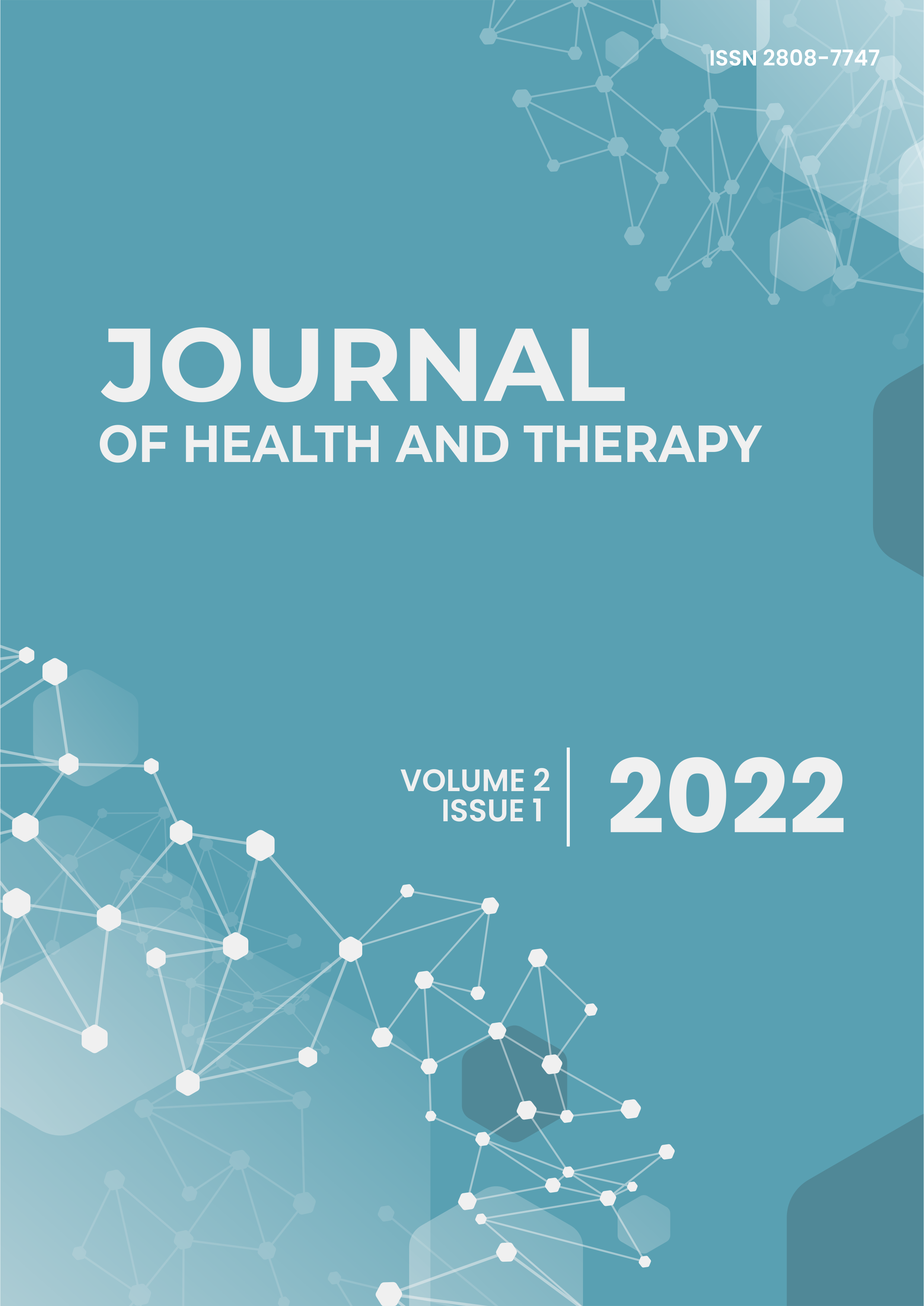Different Effect of Donation Ionophoresis and Phonophoresis for Pain Reduction in Carpal Canal Syndrome
DOI:
https://doi.org/10.53088/jht.v2i1.2122Keywords:
iontophoresis, phonophoresis, pain, CTSAbstract
The thenar pain and paresthesias experienced by people with CTS greatly interfere with their daily activities. Long-lasting repetitive strain injuries, thickening of the yellow ligament and pregnancy are suspected to be the cause. Objective: To determine the difference in effect of iontophoresis and phonophoresis in reducing pain in CTS cases. The research subjects were CTS patients who visited the physiotherapy center at UNS Hospital in Surakarta. Method: experimental research with two pre and post test design groups. 21 subjects aged 26 to 61 were randomly assigned to 2 groups, 10 were assigned to the iontophoresis group and 11 to the phonophoresis group. The cream used contains methyl salicylate. Pain assessment was performed before and after the intervention in both groups. Analysis: Test of normality of the VAS pain data before treatment of the two groups with the Shapiro Wilk test obtained p 0.05. Pre-test VAS homogeneity test in the two groups with the results of the Mann Whitney test obtained p 0.05. The pre and post difference test for each group used Wilcoxon's test with results for all groups showing p≤ 0.05. The difference test between the pre and post VAS differences using the Mann Whitney test was obtained p 0.05. Results: The difference between the pre and post VAS tests between the two groups showed that the two interventions did not show a different effect, but the pre and post VAS tests for each group showed significant results. Conclusion: The two interventions have the same effect on pain reduction in CTS cases.
References
Andrade, P. C., Flores, G. P., Uscello, J. de F. M., Miot, H. A., & Morsoleto, M. J. M. da S. (2011). Use of iontophoresis or phonophoresis for delivering onabotulinumtoxinA in the treatment of palmar hyperidrosis: A report on four cases. Anais Brasileiros de Dermatologia, 86(6), 1243–1246. https://doi.org/10.1590/S0365-05962011000600037
Baixauli, F., Inglés, F., Alcántara, P., Navarrete, R., Puchol, E., & Vidal, F. (1990). Percutaneous Treatment of Acute Soft Tissue Lesions with Naproxen Gel and Ketoprofen Gel. Journal of International Medical Research, 18(5), 372–378. https://doi.org/10.1177/030006059001800505
Bland, J. D. P., & Rudolfer, S. M. (2003). Clinical surveillance of carpal tunnel syndrome in two areas of the United Kingdom, 1991-2001. Journal of Neurology, Neurosurgery and Psychiatry, 74(12), 1674–1679. https://doi.org/10.1136/jnnp.74.12.1674
Burton, C., Chesterton, L. S., & Davenport, G. (2014). Diagnosing and managing carpal tunnel syndrome in primary care. British Journal of General Practice, 64(622), 262–263. https://doi.org/10.3399/bjgp14X679903
Singh, J. (2012). Textbook of Electrotherapy. In Textbook of Electrotherapy. https://doi.org/10.5005/jp/books/11673
Smidt, N., Assendelft, W. J. J., Arola, H., Malmivaara, A., Green, S., Buchbinder, R., Van Der Windt, D. A. W. M., & Bouter, L. M. (2003). Effectiveness of physiotherapy, for lateral epicondylitis: A systematic review. Annals of Medicine, 35(1), 51–62. https://doi.org/10.1080/07853890310004138
Thakur, R., Patole, K., & Mitra, M. (2017). To Compare the Effect of Naproxen Applied by Topical Iontophoresis and Phonophoresis in Treatment of Lateral Epicondylitis. Indian Journal of Physiotherapy and Occupational Therapy - An International Journal, 11(3), 96. https://doi.org/10.5958/0973-5674.2017.00081.8
Downloads
Published
How to Cite
Issue
Section
License
Copyright (c) 2022 Sri Suwarni, Fendy Nugroho

This work is licensed under a Creative Commons Attribution-ShareAlike 4.0 International License.
Authors who publish with this journal agree to the following terms:
The author(s) retain copyright and grant the journal the right of first publication with the work simultaneously licensed under a CC BY-SA 4.0 license that allows others to remix, adapt, and build upon the work even for commercial purposes, as long as they credit the author(s) and license their new creations under the identical terms.
License details: https://creativecommons.org/licenses/by-sa/4.0/
Most read articles by the same author(s)
- Sri Suwarni, Suryo Ediyono, Peranan Filsafat Ilmu terhadap Fisioterapi , Journal of Health and Therapy: Vol. 2 No. 2 (2023): Journal of Health and Therapy
- Saifudin Zuhri, Sri Suwarni, Efektivitas Mobilisasi Saraf Nervus Ischiadicus pada Kasus Ischialgia Et Causa Sindroma Piriformis Setelah Diberikan Terapi Standar , Journal of Health and Therapy: Vol. 2 No. 2 (2023): Journal of Health and Therapy

